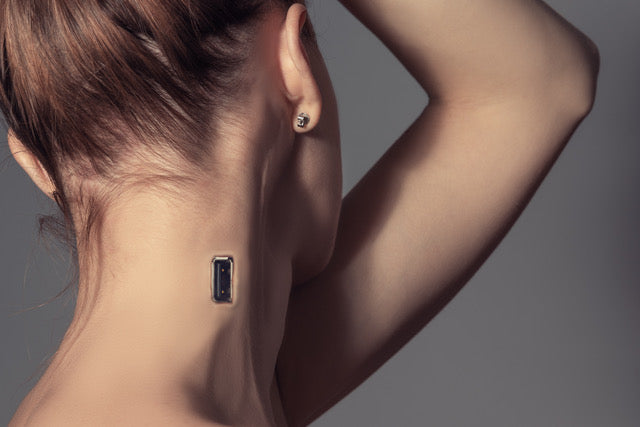PAIN IN THE NECK

MP EDITION 093
The increased time we’re spending on our devices is catching up to us. Be honest, how many hours a day do you spend on the computer or your phone? It’s likely a good majority of your day, especially if you’ve been working from home this past year.
If that’s the case for you, you may be wondering why you’re experiencing neck and back pains, or maybe you’re wondering what those lines on your neck that suddenly appeared are.
This condition is known as “tech neck”.
What is tech neck?
Tech neck is caused by repeatedly craning your head downward and forward to look at a screen, causing tension in your neck. You might experience neck strain, stiff shoulders, and headaches. If left untreated, it can even lead to damage to your spine.
What causes tech neck?
As the name suggests, tech neck occurs because we’re using tablets, computers, and mobile phones more frequently. In addition, many people have been working from home over the last few months without proper ergonomic setups. Another impact of the move to WFH is that there is little delineation between work and personal life, so people are on their devices more and more.
The muscles in the back of the neck hold your head up when you’re working on your computer or looking down at your phone. The more time you spend looking down, the harder your muscles have to work to support your head. So if you’re spending a lot of time on your devices, your muscles get tired quickly, leading to issues.
Symptoms of tech neck
Some of the symptoms caused by holding your neck still for long periods include:
- Headaches
- Neck spasms
- Stiff necks
- Creases and wrinkles
- Pain between shoulder joints
- Difficulty looking up after a while
In severe situations, you might even experience numbness, tingling, or weakness that can travel to your arms because of a pinched nerve in your neck.
It doesn't just lead to physical discomfort either. There’s also an aesthetic impact. Holding your head at a downward angle for many hours at a time can lead to neck wrinkles.
Can tech neck be reversed?
The good news is that the effects of tech neck can be treated. From exercises that will stretch and align your body to skincare treatments, you can alleviate pain and discomfort as well as reverse the aesthetics effects of tech neck.
How do you treat tech neck?
Do a stretch
If you’re experiencing a stiff neck, find relief in back-arching stretches, as well as aerobic and strength-training exercises.
Get a massage
For pain relief, consider getting treatment from regular soft tissue massage treatments from a chiropractor. These treatments help break down adhesions, reduce inflammation, and restore motion.
Extend your skincare to your neck
The skin on the neck is one of the most delicate areas on your body because it is fairly thin, which means it has less collagen and elastin. Aesthetic tech neck concerns come in the form of horizontal necklines or neck wrinkles. The below skin care products can help combat visual tech neck:
- Sunscreen: UV radiation contributes to wrinkles so slather on that sunscreen
- Vitamin C antioxidant serums: Collagen-boosting and protective properties help promote elasticity
- Hydrating moisturizers: Ingredients such as peptides, ceramides, and hyaluronic acid help restore and plump up the skin. Dermalogica also has a Neck Fit Contour Serum that works to firm and tone the skin on your neck.
Get a treatment
- Radiofrequency microneedling: To resurface new skin, promote collagen and elastin production, tighten and improve its overall texture
- Botox: To plump up lines and restore volume in the neck
- Fillers: To fill horizontal lines on the neck
- Laser treatments: Treatments like Fraxel and CO2 lasers can also help to reduce the signs of these horizontal lines
How to prevent tech neck?
Invest in a proper chair
Sit with the chair reclined at 25-30 degrees to help prevent slouching. When you lean back, the chair helps support part of your weight so the pressure is taken off the discs in your neck and back. This way, it’s not all on the muscles in your neck to hold up your head which creates tension and pain.
Keep moving
If you have a job where you sit all day, try to get up and walk around at least every 15-30 minutes, even if it’s for a minute. This helps get the blood circulating and helps get your neck in a different position. It’s not only good for your neck but also for the rest of your body.
Invest in a standing desk
You don't need to stand all the time but aim to stand for a little bit every 20 to 30 minutes of sitting. And make sure your monitor is set at eye level.
Work on your posture
Sit with your feet grounded on the floor to help you with your posture. It’s easier to hold good posture when your feet are grounded to help build good posture from the ground up.
Take a digital detox once in a while
The last tip is to take a small digital detox once in a while. While it’s probably not feasible to cut your screen time fully, try to make a conscious effort to spend some time sans screen.



